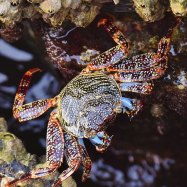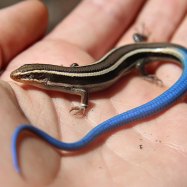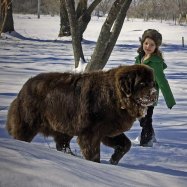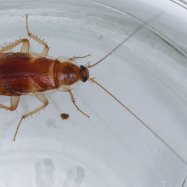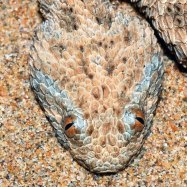
Saint Berdoodle
Varies, typically 24-30 inches
Saint Berdoodles are a popular designer breed that combines the intelligence and loyalty of a Saint Bernard with the non-shedding coat of a Poodle. These lovable giants can vary in size from 24-30 inches and are part of the Canidae family, making them great companions for families. Their large and muscular bodies make them great for outdoor adventures and snuggles on the couch. With their playful and gentle nature, it's no wonder Saint Berdoodles are a top choice for dog lovers.
Animal Details Summary:
Common Name: Saint Berdoodle
Kingdom: Animalia
Habitat: Varied, but mainly domesticated
The Majestic Saint Berdoodle: A Unique Hybrid Dog Breed
The world of dogs is full of unique and adorable breeds, from the tiny Chihuahua to the majestic Great Dane. However, there is one breed that stands out from the rest – the Saint Berdoodle. This hybrid dog breed is a cross between a Poodle and a Saint Bernard, and it has gained quite a following in recent years. In this article, we will take a closer look at this fascinating and lovable dog and discover what makes it such a special breed Saint Berdoodle.The Origin of the Saint Berdoodle
The first question that may come to mind when you hear the name "Saint Berdoodle" is, where did this breed come from? Well, as mentioned earlier, it is a hybrid breed, meaning it is a mix of two different dog breeds – the Poodle and the Saint Bernard. The Poodle is a popular breed known for its intelligence, hypoallergenic coat, and variety of sizes, while the Saint Bernard is a beloved and iconic breed known for its gentle nature and rescue capabilities.The Saint Berdoodle has been around for several decades, but its popularity has increased in recent years as more and more people are looking for hypoallergenic and low-shedding dog breeds. Due to their mixed origins, there is no definitive answer as to when and where the Saint Berdoodle was first bred. However, we do know that the breed has its roots in North America and is thought to have been developed in the United States sometime in the 1970s.
Physical Characteristics of the Saint Berdoodle
The Saint Berdoodle is a large and muscular breed, with a well-built and sturdy frame. Their body shape can vary, but most Saint Berdoodles have a square appearance with broad shoulders, a deep chest, and a strong neck. As a hybrid breed, their appearance can also vary, with some taking more after the Poodle in terms of their physical traits while others resemble the Saint Bernard more closely.One of the most significant draws of the Saint Berdoodle is its low-shedding and hypoallergenic coat Starfish. They inherit this trait from the Poodle parent, making them a popular choice for allergy sufferers. Their coats can come in a variety of colors, including black, white, cream, apricot, and brown, with some having a mix of two or more colors. While their coat texture may vary, it is generally soft, wavy, and easy to maintain, requiring regular brushing to keep it looking its best.
Size and Weight
Being a hybrid breed, there is no standard size or weight for the Saint Berdoodle. However, on average, these dogs can grow to be between 24-30 inches tall, and their weight can range from 70-120 pounds. As with many large breeds, their size and weight will also depend on factors such as their diet, lifestyle, and genetics.Temperament and Personality
One of the most appealing traits of the Saint Berdoodle is its friendly and loving nature. These dogs are incredibly affectionate, and they thrive on human companionship. They make excellent family pets as they are gentle and patient with children, making them perfect playmates. They are also known to be great with other household pets, and early socialization will help prevent any potential issues.Due to their intelligence, Saint Berdoodles are easy to train, and they excel in activities such as obedience training and agility. They also inherit their Poodle parent's intelligence, making them quick learners and eager to please their owners. With proper training and socialization, these dogs make excellent therapy and assistance dogs for people with disabilities.
However, it is essential to keep in mind that the Saint Berdoodle is a cross between two large and active breeds, so they require plenty of exercise and mental stimulation. They will do well with daily walks, playtime, and interactive toys to keep them physically and mentally stimulated. Without proper exercise, they may become bored and restless, leading to destructive behavior.
Health Concerns
As with any dog breed, the Saint Berdoodle is susceptible to certain health issues, and potential owners should be aware of these before bringing one home. Some of the common health concerns for Saint Berdoodles include hip and elbow dysplasia, which can lead to joint problems and pain, and eye issues such as cataracts and progressive retinal atrophy.However, the good news is that when bred responsibly, the Saint Berdoodle tends to inherit fewer health problems compared to its purebred parents. To ensure your Saint Berdoodle has a healthy and happy life, it is essential to only purchase from reputable breeders and to schedule regular check-ups with a veterinarian.
Caring for a Saint Berdoodle
The low-shedding and hypoallergenic coat of the Saint Berdoodle makes it relatively easy to maintain. They require regular brushing to prevent matting and tangles and will require clipping every few months to keep their coat looking neat and tidy. It is also essential to regularly trim their nails, check their ears for any signs of infection, and brush their teeth regularly to maintain good oral hygiene.As mentioned earlier, these dogs require regular exercise and mental stimulation to stay healthy and happy. They will do well with a decent-sized yard or access to a dog park, but they can adapt to apartment living as long as they get their daily exercise needs met. Saint Berdoodles also thrive on human interaction, so they are best suited for families or individuals who have the time and space to give them the attention they need.
Loving and Loyal Companions
In conclusion, the Saint Berdoodle is a magnificent and unique dog breed that has captured the hearts of many dog lovers. They have a gentle and loving nature, making them amazing family pets, and their intelligence and desire to please make them great candidates for various activities and training. With proper care and exercise, the Saint Berdoodle will be an excellent companion for many years to come. So, if you are looking for a loyal and lovable friend, consider adding a Saint Berdoodle to your family.

Saint Berdoodle
Animal Details Saint Berdoodle - Scientific Name: Canis lupus familiaris
- Category: Animals S
- Scientific Name: Canis lupus familiaris
- Common Name: Saint Berdoodle
- Kingdom: Animalia
- Phylum: Chordata
- Class: Mammalia
- Order: Carnivora
- Family: Canidae
- Habitat: Varied, but mainly domesticated
- Feeding Method: Omnivorous
- Geographical Distribution: Varied, mainly found in North America
- Country of Origin: United States
- Location: Varied
- Animal Coloration: Varies depending on the individual
- Body Shape: Large and muscular
- Length: Varies, typically 24-30 inches

Saint Berdoodle
- Adult Size: Large, typically weighing 110-200 pounds
- Average Lifespan: 10-12 years
- Reproduction: Sexual
- Reproductive Behavior: Varies depending on the individual
- Sound or Call: Barking
- Migration Pattern: Non-migratory
- Social Groups: Varies depending on the individual
- Behavior: Friendly, intelligent, and loyal
- Threats: Varied
- Conservation Status: Not applicable as a domesticated breed
- Impact on Ecosystem: Not applicable as a domesticated breed
- Human Use: Companion and working dog
- Distinctive Features: Large size, dense coat, and friendly disposition
- Interesting Facts: Saint Berdoodles are a cross between a Saint Bernard and a Poodle, resulting in a hypoallergenic and low-shedding coat.
- Predator: Varied, but mainly humans

Canis lupus familiaris
The Fascinating World of Saint Berdoodles
When you hear the word Saint Berdoodle, you may wonder what kind of creature it is. Is it a mythical creature from a fantasy novel? Or perhaps a character from a children's cartoon? However, Saint Berdoodles are very real and unique animals that have captured the hearts of many dog lovers.The Saint Berdoodle is a cross between a Saint Bernard and a Poodle, resulting in a magnificent creature that possesses the best qualities of both breeds. These gentle giants have become increasingly popular in recent years, thanks to their friendly nature and low-shedding coat PeaceOfAnimals.Com. In this article, we will take a closer look at the distinctive features and behaviors of the Saint Berdoodle.
The Basics: Size, Lifespan, and Reproduction
Saint Berdoodles are considered a large breed, typically weighing between 110-200 pounds and standing at an average height of 23-27 inches. Given their size, they require plenty of space to live and thrive, making them unsuitable for apartment living. They are also known to have a shorter lifespan of about 10-12 years, due to their large size.When it comes to reproduction, Saint Berdoodles reproduce sexually, like most other domesticated animals. However, their reproductive behavior can vary depending on the individual. Some may be more active in finding a mate, while others may not show any interest at all. It is essential for breeders and owners to carefully monitor their Saint Berdoodles' reproductive behavior to ensure their well-being.
Social Groups and Behavior
While there is no specific social structure for Saint Berdoodles, their behavior can vary depending on the individual Swordfish. Some may prefer a solitary lifestyle, while others may thrive in a social group. However, overall, Saint Berdoodles are known to be friendly, intelligent, and loyal dogs, making them excellent companions for families.Their gentle nature, coupled with their large size, makes them great for families with children, but it is essential to teach children how to interact with these animals properly. Saint Berdoodles are highly intelligent and can learn quickly, making them great for obedience training and various working tasks, such as search and rescue or therapy dogs.
Distinctive Features of the Saint Berdoodle
The Saint Berdoodle's most distinctive features are its size, coat, and friendly disposition. They are an impressive breed of dog, towering over most other breeds, and their coat is typically dense and hypoallergenic, making them suitable for people with allergies. They also have a friendly and calm demeanor, which is why they are known as gentle giants.Another unique aspect of Saint Berdoodles is their coat color, which can vary from black, brown, or grey to a mixture of these colors. Their coat may also have white markings, making them even more eye-catching and distinctive. Overall, they are beautiful creatures that are sure to turn heads wherever they go.
Interesting Facts About Saint Berdoodles
Aside from their distinctive features, there are several interesting facts about Saint Berdoodles that make them stand out even more. Let's take a look at some of these fascinating facts:- Saint Berdoodles were first bred in the United States in the 1980s, making them a relatively new breed. They were initially bred to create a hypoallergenic version of the Saint Bernard, and the result was the lovable and low-shedding Saint Berdoodle.
- Saint Berdoodles are known to have a goofy personality, making them great for families who enjoy a good laugh. They love to play and have fun, making them excellent playmates for children.
- Despite their large size, Saint Berdoodles are known to have a calm demeanor, making them great for households that prefer a quieter and more relaxed pet.
- Due to their Poodle genes, Saint Berdoodles have a longer lifespan than their purebred counterparts, making them a great option for those who want a larger dog with a longer lifespan.
Threats to Saint Berdoodles and Their Impact on the Ecosystem
As a domesticated breed, Saint Berdoodles do not face any significant threats in terms of predators or conservation status. However, just like any other dog, they may face health issues such as hip dysplasia and bloat, which can significantly impact their well-being. It is crucial for owners to educate themselves on these potential health issues and take preventive measures to keep their Saint Berdoodles healthy and happy.In terms of their impact on the ecosystem, as a domesticated breed, Saint Berdoodles do not have any significant impact. They do not play a role in the ecosystem like wild animals do, and their impact is limited to being excellent companions and working dogs for humans.
Human Use, Sustainable Breeding, and Adoption
Saint Berdoodles have been bred for generations now and have become increasingly popular as companion and working dogs. However, it is essential for breeders to ensure that their breeding practices are ethical and sustainable. Breeding a hybrid dog like the Saint Berdoodle requires careful consideration and responsible breeding to reduce the risk of health issues and maintain the breed's standard.For those who are interested in having a Saint Berdoodle as a pet but do not want to go through a breeder, adoption is always an option. Many Saint Berdoodles end up in shelters due to various reasons, and adopting one can be a great way to give a deserving dog a loving home.
Predators and Human Interaction
As a domesticated breed, Saint Berdoodles do not have any natural predators. However, they may face threats from humans, such as abuse or neglect. It is crucial to provide proper care and attention to these gentle giants to ensure their well-being and safety.In terms of human interaction, Saint Berdoodles are known to be affectionate and love to spend time with their owners. They thrive on human attention and can become anxious and destructive if left alone for extended periods. Therefore, they require a considerable time commitment from their owners, and it is essential to provide them with enough exercise and mental stimulation to keep them happy and healthy.
In Conclusion
Saint Berdoodles are a unique and lovable breed of dog that has become increasingly popular in recent years. They possess the best qualities of both the Saint Bernard and Poodle, making them gentle, intelligent, and friendly companions. Their distinctive features, such as their size, low-shedding coat, and friendly disposition, have made them stand out in the world of dog breeds. While they may face health issues and need proper care and attention, their loving and affectionate nature make them an excellent choice for families and individuals looking for a loyal and lovable pet. With proper breeding practices and responsible ownership, we can ensure that Saint Berdoodles continue to thrive and bring joy to many households for generations to come.

The Majestic Saint Berdoodle: A Unique Hybrid Dog Breed
Disclaimer: The content provided is for informational purposes only. We cannot guarantee the accuracy of the information on this page 100%. All information provided here may change without prior notice.

